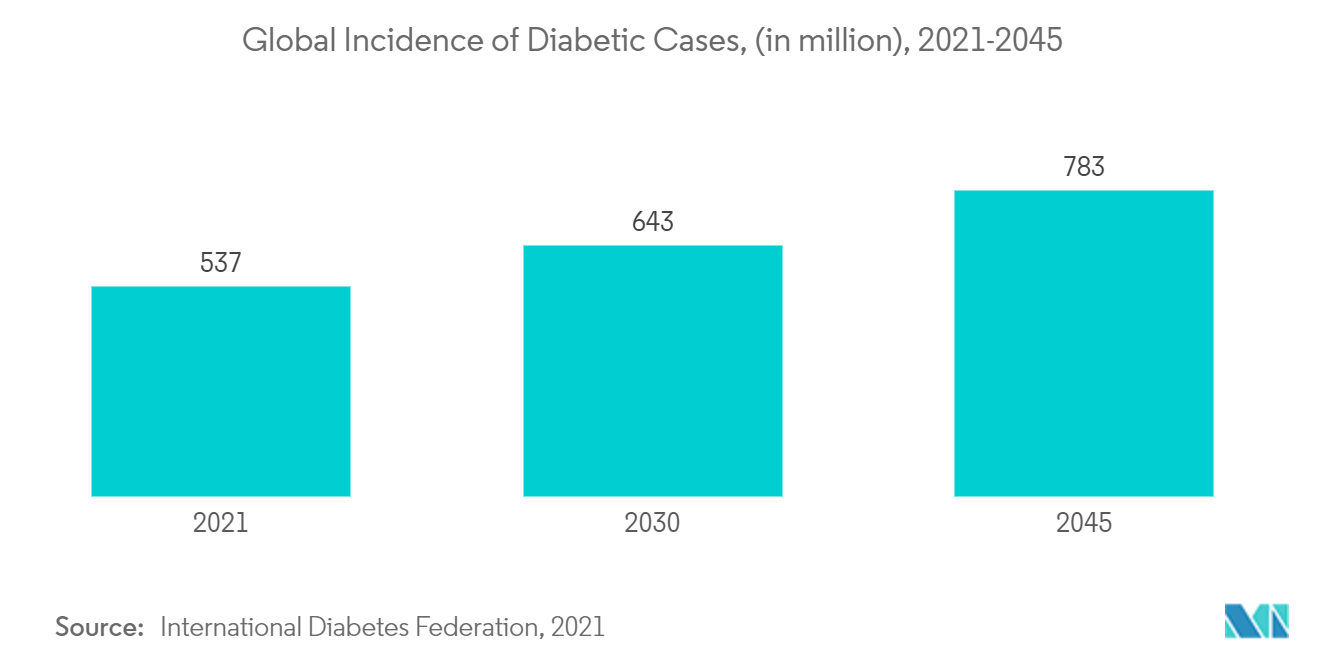Market Trends of Global Sacral Nerve Stimulation Industry
This section covers the major market trends shaping the Sacral Nerve Stimulation Market according to our research experts:
Sacral Nerve Stimulation in Urinary and Fecal Incontinence Estimated to Witness Growth
The urinary and fecal incontinence segment is estimated to register significant growth in the future, due to the growing prevalence of patients having urinary tract infection (UTI), anal sphincter injuries, and overactive bladders. A research article published in the African Journal of Urology (2021), titled, "Deep insights into urinary tract infections and effective natural remedies" reported that urinary tract infections (UTIs) were the most common outpatient infections. For another instance, in 2021 an article titled, Healthcare-associated urinary tract infections in urology reported that the prevalence of urinary tract infections (UTIs) was significant among the elderly, and the incidence of urinary tract infections (UTIs) in women aged 65 years was high as compared to the total studied population. These populations are expected to create a demand for treatment and thus drive the segment's growth. Moreover, the rising number of people having constipation and pelvic pain is anticipated to boost the segment.
Also, in the American Journal of Obstetrics and Gynecology, 2021, an article titled 'Prevalence and trends in urinary incontinence among women in the United States, 2005-2018', stated that there was a rise in the incidence of various diseases, such as Parkinson's disease, diabetes, and multiple sclerosis, worldwide, which may lead to an increased prevalence of urinary incontinence. This, in turn, is expected to increase the demand for urinary incontinence treatment devices over the forecast period. Furthermore, the growing trend of research and development activities by the key players and the increasing number of product approvals are anticipated to aid in the growth of the segment. For instance, in August 2020, Medtronic's InterStim Micro neurostimulator and InterStim SureScan MRI leads were approved by the United States Food Drug and Administration (USFDA) for the treatment of patients with bladder and bowel control conditions. The InterStim Micro neurostimulator is indicated for the treatment of patients with overactive bladders, fecal incontinence, and non-obstructive urinary retention, through sacral neuromodulation therapy.
Thus, owing to the aforementioned factors, the studied segment is expected to witness significant growth over the forecast period.

North America Expected to Hold a Significant Share in the Market
North America is expected to hold a significant share of the sacral nerve stimulation market due to the rising prevalence of overactive bladder conditions (OAB) and urge incontinence, the growing awareness of the availability of treatment, and the increasing adoption of technologically advanced medical devices, such as implantable sacral nerve stimulation (SNS) devices. Furthermore, the well-established infrastructure, growing healthcare expenditure, and favorable reimbursement policies for these devices and treatment procedures are expected to fuel the market studied in this region. Also, the presence of the major key market players, recent mergers, acquisitions, product launches, and partnerships in the region is driving the market. For instance, in February 2021, Axonics Modulation Technologies Inc. completed the acquisition of the privately-held Contura Ltd. and its flagship product, Bulkamid, which is indicated for the treatment of stress urinary incontinence (SUI) in women. For another instance, in April 2022, the Axonics, F15 device was cleared by the United States Food and Drug Administration (USFDA) allowing it to be implanted for upward of 15 years to block the abnormal nerve signals linked to overactive bladder and fecal incontinence.
The increasing geriatric population and the growing demand for minimally-invasive surgeries also aid in the growth of the studied market in North America. Additionally, as per the article published in February 2021, titled 'Cross-sectional Study of Prevalence and Correlates of Urinary Incontinence (UI) in Older Home-care Clients With Type 2 Diabetes in Ontario, Canada,' among 118,519 older adults with diabetes, 39,945 (33.7%) of them had daily or multiple daily episodes of Urinary Incontinence (UI). Also, as per an article published in Medscape in June 2021, urinary incontinence was estimated to affect 10-13 million people in the United States. Also, the region is marked by a high incidence of diabetes. Diabetes is marked by improper utilization of insulin or lack of insulin by the body cells, resulting in glycosuria. The urinary tract infection (UTI) is one of the most frequent due to the glucose increase in blood circulation and the impairment of cellular immunity, creating a favorable environment for bacteria proliferation at the inflammation spots. Thus, the high incidence of diabetes among the American population is marked by a high incidence of urinary tract infection (UTI), thereby increasing the demand for surgical procedures, and contributing to the market growth.
Thus, the growing burden of urinary incontinence in the region is likely to be one of the major drivers for the studied market over the forecast period.


